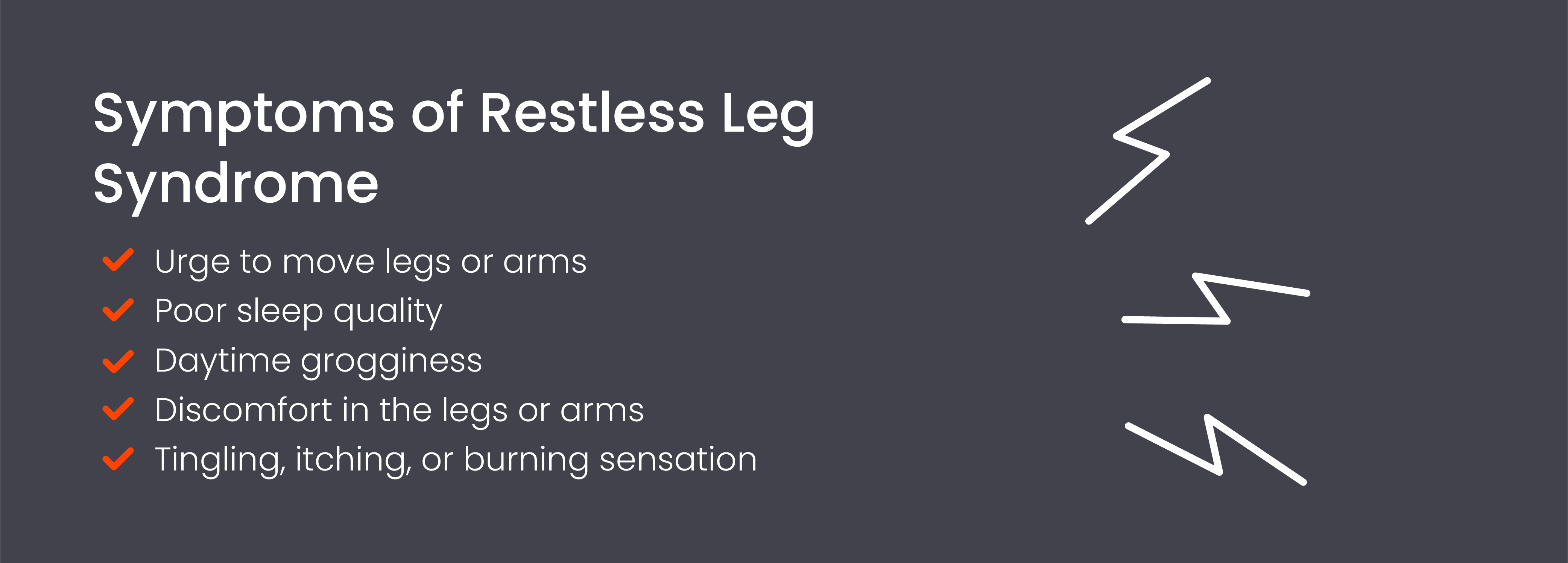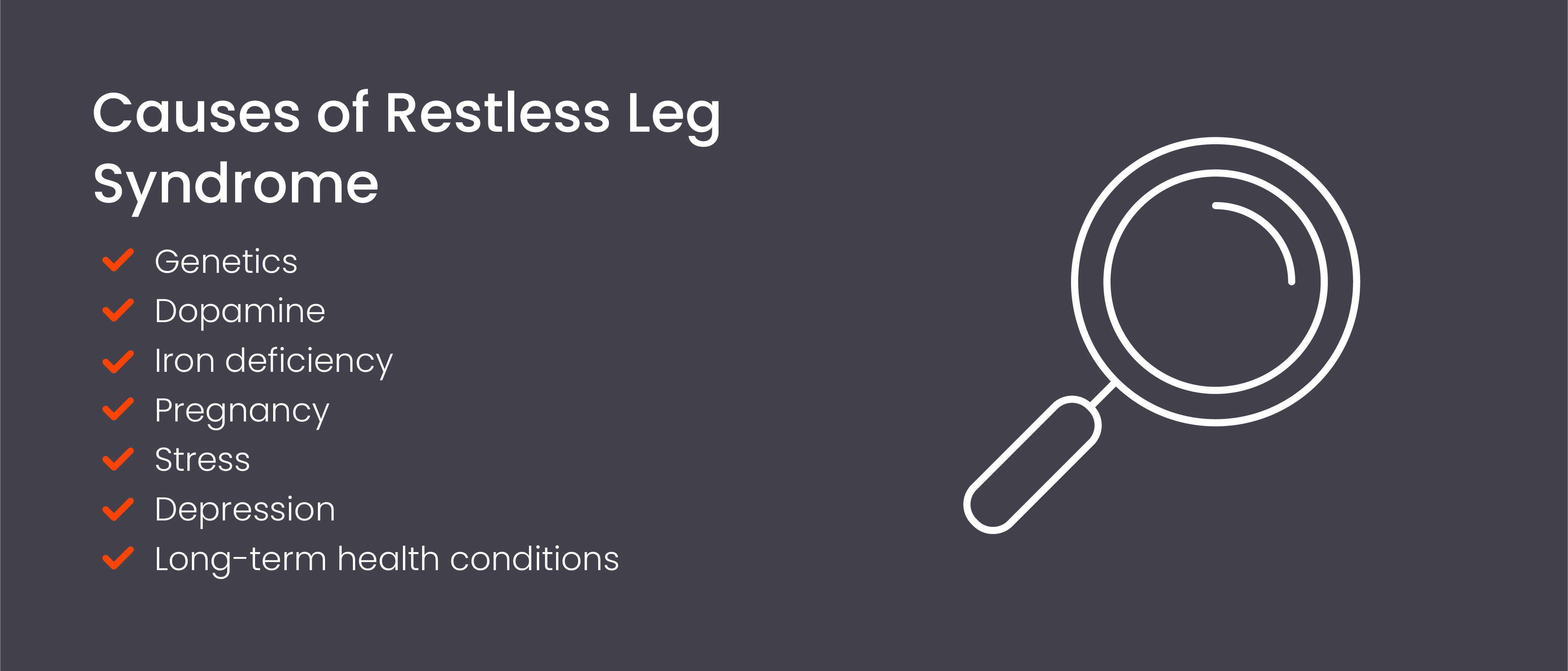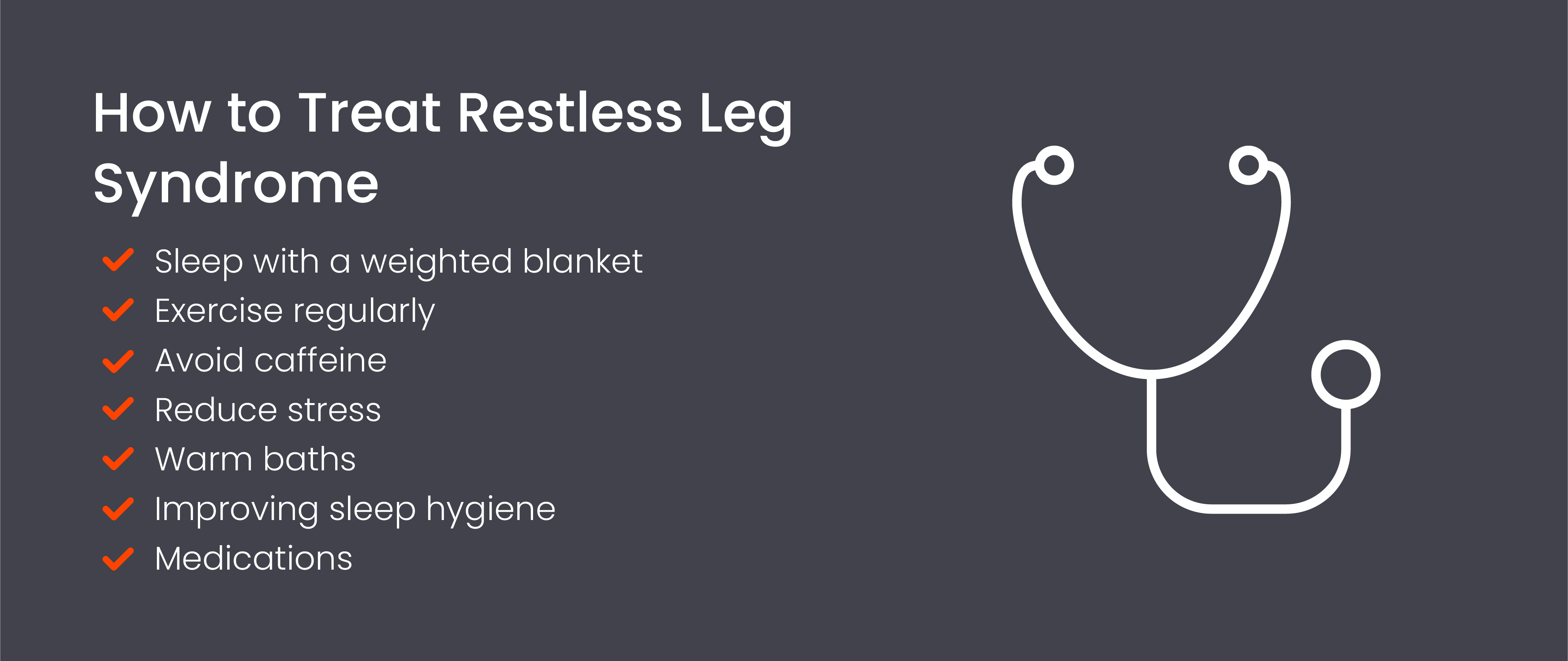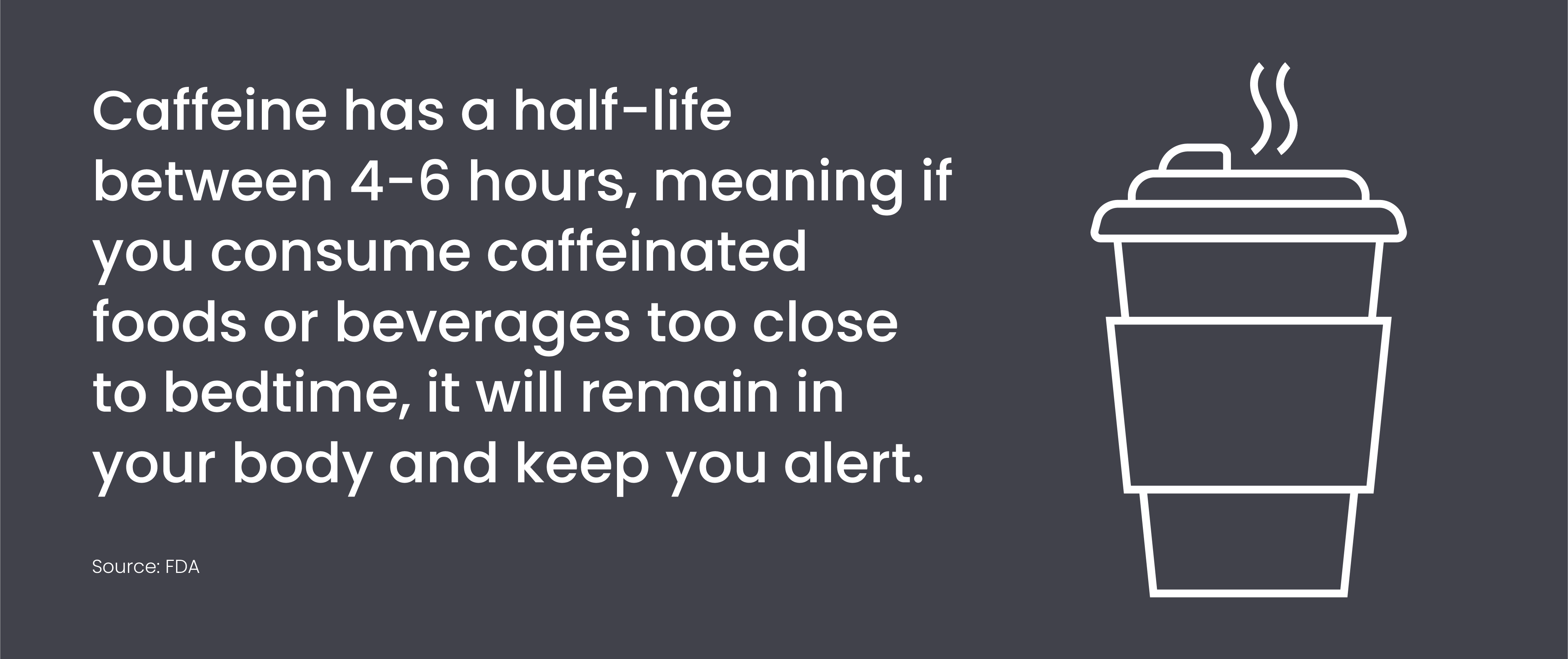RLS is considered a sleep disorder because the intense urge to move the legs can affect someone’s ability to get quality sleep. Unfortunately, anyone of any age can have RLS, which typically worsens as you age. Unfortunately, because RLS affects sleep, it can impact your ability to function daily, making you feel tired and groggy even after sleeping. But what causes restless leg syndrome, and how can individuals with RLS improve their sleep quality? This article will discuss restless leg syndrome causes, symptoms, and treatment to help you get a better night’s sleep.
- What Is Restless Leg Syndrome?
- What Are the Symptoms of Restless Leg Syndrome?
- What Causes Restless Leg Syndrome?
- How Can You Treat Restless Leg Syndrome?
- Wrapping Up: Restless Leg Syndrome
What Is Restless Leg Syndrome?
Restless leg syndrome (RLS) is a condition characterized by an individual’s inability to control the urge to move their legs. Also called Willis Ekbom disease, it can cause uncomfortable or even painful sensations in the legs, such as crawling, pulling, or prickling, which cause the uncontrollable urge to move the legs.

RLS is most common when individuals sit or lie down in the evening. It’s a common sleep disorder because it may affect an individual’s ability to enter deep sleep, keeping them in the non-REM stages of sleep for too long and disrupting their sleep cycle. Unfortunately, this can lead to fatigue the next day.
Most people with RLS experience worsening symptoms at night when sitting or lying in bed. Inactivity and extended periods of sitting may also cause RLS symptoms, but moving the legs can relieve some discomfort even though the sensations recur once the person becomes inactive again.
Like many other sleep disorders, RLS causes exhaustion and daytime sleepiness which can affect your mood, performance, and relationships. In addition, many people with RLS have difficulty making it through an entire day of work or have problems with memory.
Unfortunately, RLS affects sleep quality, with many people experiencing periodic limb movement of sleep (PLMS), an involuntary and uncontrollable leg movement, like a twitch or a jerk, that frequently occurs throughout the night.
What Are the Symptoms of Restless Leg Syndrome?
Restless leg syndrome causes several symptoms, but the most common among those suffering from RLS is the uncontrollable urge to move the legs due to physical sensations. These symptoms can range from mild to severe and may come and go multiple times throughout the day or night. They also vary in intensity and duration between episodes, but most people experience worsening symptoms at night while resting. Symptoms of restless leg syndrome may include:

- Urge to move legs or arms: RLS is characterized by an urge to move the legs or arms. Many people with RLS experience nighttime twitching, which may happen throughout the night or during a period of inactivity.
- Poor sleep quality: Since individuals with RLS may also suffer from PLMS, they may experience poor sleep quality. RLS affects an individual’s ability to fall asleep because of the urge to move their legs and the sensations that occur due to prolonged inactivity. Since RLS is typically worse at night, individuals may experience an inability to fall asleep or stay asleep throughout the night.
- Daytime grogginess: When you don’t get enough quality sleep, you’ll experience daytime exhaustion, which can also affect your ability to fall asleep. In addition, daytime exhaustion may make individuals with RLS more inactive or sedentary, exacerbating their symptoms.
- Tingling, itching, or burning sensation: Many people with RLS have an uncontrollable urge to move their legs due to the sensations in their legs. These sensations, such as tingling, itching, burning, or crawling, typically occur after prolonged periods of inactivity, such as when someone sits at a desk at work. It’s important to note that the sensations of RLS are not the same as when your foot or leg falls asleep, as individuals with RLS don’t experience numbness in their limbs.
Typically, the unpleasant sensations are alleviated when someone moves their legs, which is why individuals with RLS often move their legs, even though the movement is uncontrollable. In addition, people suffering from RLS may pace more often or move their legs while sitting to prevent the sensations from recurring.
What Causes Restless Leg Syndrome?
Unfortunately, it’s difficult for doctors to determine what causes restless leg syndrome in some individuals. There are multiple risk factors for restless leg syndrome, including genetics, stress, and long-term health conditions. Unfortunately, because the condition isn’t life-threatening, less focus is placed on determining the cause of restless leg syndrome than on finding ways to treat it. However, common causes of restless leg syndrome include the following:

Genetics
RLS can be a genetic disorder. Therefore, if a parent suffers from RLS, you may be at a higher risk of having it. That being said, genetics isn’t the only factor that can put you at risk of restless leg syndrome. Unfortunately, the cause of restless leg syndrome when its hereditary is unknown.
Dopamine
Some evidence suggests restless leg syndrome is related to dopamine. Dopamine is a neurotransmitter that’s responsible for mood. It’s one of the most well-known feel-good chemicals in the brain that plays a role in mood, memory, and focus. However, dopamine also plays a role in movement. Dopamine helps control muscle activity and movement by acting as a messenger between the brain and the rest of the nervous system, helping the brain coordinate movement.
When dopamine levels fall and the amount of this chemical in the brain is reduced, it can cause involuntary movements, such as those associated with RLS. Of course, dopamine levels fluctuate throughout the day. However, they typically drop towards the end of the day, when most people experience RLS symptoms.
Iron deficiency
An iron deficiency can cause RLS, especially if you have a history of stomach or bowel bleeding or experience heavy menstrual periods. Low iron has been strongly linked to RLS, and individuals with lower iron levels typically have worse symptoms.
Pregnancy
Hormonal changes, such as pregnancy, may cause RLS symptoms. Many women experience RLS symptoms for the first time during the last trimester of their pregnancies, but the uncomfortable sensations typically disappear after giving birth. Unfortunately, the cause of restless leg syndrome during pregnancy is unknown, but it may be associated with an iron deficiency or hormonal imbalances.
Stress
Stress is typically not the cause of RLS; instead, it’s a trigger. Individuals with RLS may have worse symptoms during times of anxiety. When you experience stress, the entire body feels the effects, so RLS symptoms can worsen during periods of extreme or chronic stress. In addition, anxiety can cause restlessness at night, which may cause symptoms resembling RLS.
Depression
RLS has been linked to depression, which may be due to dopamine levels. Low dopamine levels have been linked to RLS and depression, so individuals suffering from depression may be at a higher risk of developing RLS. Evidence suggests an overlap between the disorders, which may only further prove that dopamine is a significant contributing factor to RLS.
Long-term health conditions
Several long-term health conditions also increase the risk of developing RLS. These conditions include:
- Peripheral neuropathy: Peripheral neuropathy is a type of nerve damage most commonly associated with diabetes. Individuals with neuropathy may experience pain, numbness, and tingling in the extremities, which may resemble RLS symptoms.
- Kidney disease: Many individuals with kidney failure experience RLS, especially those on dialysis. Unfortunately, the cause of restless leg syndrome in kidney disease patients is unknown, but iron deficiency and anemia may play a critical role.
- Diabetes: Individuals with type 2 diabetes are at an increased risk of RLS because, when left untreated, diabetes can result in significant nerve damage in the form of neuropathy. Even individuals without peripheral neuropathy may experience RLS due to diabetes and the lack of blood flow to extremities like the legs.
- Parkinson’s disease: Parkinson’s disease and RLS have similar potential causes. For example, Parkinson’s disease is caused by disruptions in dopamine, similar to RLS. However, the relationship between the two isn’t well understood because most causes of restless leg syndrome are unknown. Still, individuals with Parkinson’s disease may be at a higher risk of developing RLS because of their lower dopamine levels. Sadly the two disorders have similar symptoms, including restlessness, so it may be difficult to differentiate between them.
How Can You Treat Restless Leg Syndrome?
Unfortunately, until the causes of restless leg syndrome are known, there is no cure. However, treatment for RLS will depend on the cause. For example, if an individual has diabetes that may cause RLS, doctors will aim to treat diabetes to improve the symptoms. Other ways to treat RLS include the following:

Sleep with a weighted blanket
A weighted blanket is exactly what it sounds like–it’s a blanket made from heavy materials that offers deep touch pressure therapy (DTP). There are many benefits of weighted blankets and DTP, including the potential for reducing RLS symptoms. DTP puts pressure on the body to activate the parasympathetic nervous system (PSNS), increasing endorphins and releasing neurotransmitters like dopamine. As you’ve just read, low dopamine levels may cause RLS, so delivering DTP in the form of a weighted blanket may increase dopamine levels and reduce symptoms of RLS. DTP can also counteract the uncomfortable sensations in the legs that cause the uncontrollable urge to move them, allowing you to sleep with fewer interruptions.

Layla’s weighted blanket is the perfect solution for resting or sleeping at night to reduce your RLS symptoms through DTP and improve your sleep quality. We offer weighted blankets for sleep in 15, 20, and 25 lbs to help you find the right one for you based on your weight.
Exercise regularly
Regular exercise may allow for proper blood flow to the limbs and reduce the symptoms of RLS. Activities that are gentle on the joints, such as riding a bike or walking, can help reduce RLS at night and during sleep. Unfortunately, you’ll need to be mindful of the types of exercise you do. Vigorous exercise before sleep may worsen RLS symptoms and lead to other sleep issues.
Since movement alleviates the tingling sensations associated with RLS, forcing the uncontrollable urge to move the legs, physical activity throughout the day may prevent the sensations from occurring in the first place.
Avoid caffeine
Caffeine and sleep are often discussed because it’s well-known that too much caffeine can cause poor sleep quality. Caffeine can worsen RLS symptoms because it’s a stimulant. According to the FDA, caffeine has a half-life of six hours, which means it can remain in your body for around a quarter of the entire day. So, if you consume caffeine in the afternoon or close to bed, it can keep you up at night and worsen your restless leg syndrome symptoms.

In addition, caffeine can affect your ability to fall asleep and stay asleep at night, which may make you experience worsening symptoms. Of course, avoiding caffeine likely won’t help if your goal is to completely stop your RLS symptoms in their tracks, but it can reduce the severity of the symptoms when they happen.
Reduce stress
Stress is often a trigger of RLS symptoms, so it’s important to practice stress management as much as possible to reduce your symptoms or avoid them completely. You can try stress reduction techniques like meditation, music, or journaling to help reduce stress. It’s especially important to reduce stress at night before bed. Since many people with RLS report their symptoms being worse at night and stress can worsen your symptoms while affecting your ability to fall asleep, consider stress management techniques you can do before bed.
Warm baths
Soaking in a warm bath can help relax the muscles while alleviating symptoms of RLS, like the uncomfortable crawling sensation. In addition, taking a warm bath before bed can help you relax, potentially reducing your RLS symptoms when you finally get under the covers.
Improving sleep hygiene
Some lifestyle changes can relieve RLS symptoms, including your sleep hygiene. Your nighttime routine is essential for reducing RLS symptoms and facilitating quality sleep. Therefore, you should aim to fall asleep and wake up at the same time every day and avoid screens before bed to help you fall asleep faster. Remember, insufficient sleep or poor quality sleep can lead to worsening RLS symptoms, so sleep should be your top priority for reducing symptoms and feeling less groggy the following day.
Medications
Individuals with moderate to severe RLS symptoms may benefit from medication. Several types of FDA-approved seizure medications have been proven effective at reducing RLS symptoms. Gabapentin is one of the most common medications used to treat RLS.
Iron supplements may also be used to treat RLS because iron deficiency is one of the many potential causes of restless leg syndrome. Therefore, individuals with low iron levels may benefit from improving their diet or supplementing it with vitamins.
Wrapping Up: Restless Leg Syndrome
Restless leg syndrome is a fairly common sleep disorder. Unfortunately, poor sleep can lead to worsening symptoms, and symptoms of RLS can lead to poor quality sleep. Therefore, it’s important to ensure you get a full night’s sleep every night to prevent and reduce the symptoms of RLS.
Of course, if you experience restless leg syndrome, you should discuss potential treatment options with your doctor. One way to improve your sleep is to use the right mattress. Your mattress supports your body and provides comfort while you rest. The wrong mattress can make it challenging to fall asleep or even painful to get out of bed in the morning. With the right mattress, you can improve your sleep quality, potentially reducing RLS symptoms for better sleep the following night. Browse Layla’s selection of sleep products, including mattresses, bedding, and weighted blankets.



